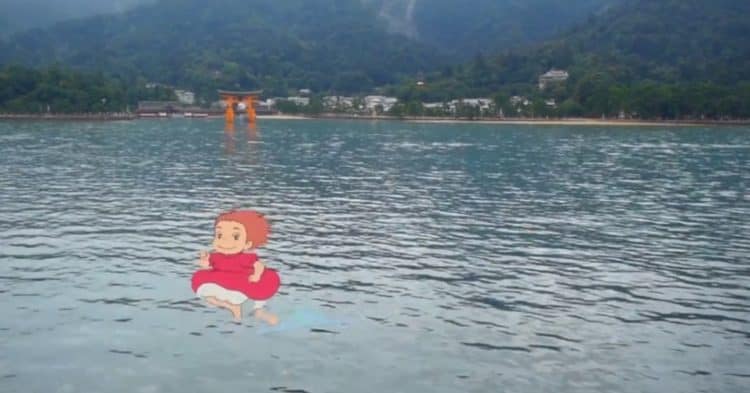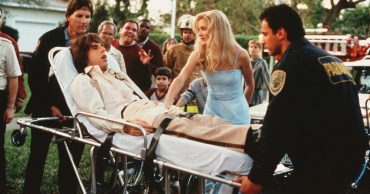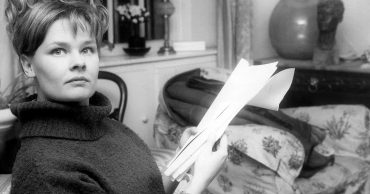
There’s great news out there for anime fans worldwide. Netflix announced this week that they obtained global rights to 21 films from Studio Ghibli, one of the greatest and influential animation studios of all time. Unless you live in the USA, Japan, Canada (rights disputes) or Crimea, North Korea, China or Syria (international disputes) you will be able to watch nearly every Studio Ghibli film from February onwards.
This is a huge coup for Netflix, who will subtitle the films in 28 languages and dub them in a further 20, and a major surprise considering founder Hayao Miyazaki’s previous comments about streaming. With the only noticeable omission being Isao Takahata’s Grave of the Fireflies, it will further establish Japan’s Studio Ghibli as one of the leading lights in world cinema.
If you are new to the world of Studio Ghibli – filled with three-dimensional villains, shapeshifting creatures, floating castles, thousands of cats and plucky young girls – it can seem like a strange and daunting place. This struggle is compounded by the fact they only really have one outright bad film, Tales of Earthsea, while the rest range from good to transcendent. To make that journey to the other side easier for you, we have singled out seven key Studio Ghibli films to start with, along with their respective release date on Netflix. Spanning from their most fantastical work to realist explorations of childhood, we hope this list will help make visiting the world of Ghibli just that little bit smoother.
Castle in The Sky (February 1)
The first official work from Studio Ghibli, established after Miyazaki’s runaway success with Nausicaä of the Valley of the Wind, Castle in The Sky is a rollicking cross between an Indiana Jones-adventure, ecological fable and steampunk fantasy. Concerning a young boy and girl’s search for a magical floating castle, it displays the ways in which Miyazaki can combine beautiful animation with incisive storytelling, creating something truly unique in the process. Hardcore fans can follow this up with The Castle of Cagliostro (pre-Ghibli) and the meandering yet still visually stunning Howl’s Moving Castle.
My Neighbour Totoro (February 1)
Featuring the most iconic animated creature outside of Disney, My Neighbor Totoro is a rare thing: a children’s tale that feels genuinely catered to their experience of wonder and sense of exploration. With no scary moments, fake antagonisms or convoluted plot points, My Neighbor Totoro is the kind of calm and gentle film that can be watched over and over again, functioning like a kind of prose poem. Released as a double bill in 1988 alongside Takahata’s Grave of the Fireflies, it helped bring the animation studio to international attention.
Kiki’s Delivery Service (February 1)
Studio Ghibli’s success is not just due to the fantastic worlds they create, but the way they use these conceits to express real emotions about the difficulties of life. Kiki’s Delivery Service is a case in point. The premise is simple: a young witch moves to a new city with her black cat, where she uses her flying skills to deliver baked goods around town. Nonetheless, Miyazaki finds a way to use this concept to explore the difficulty of not knowing what you want to do in life, creating a deeply felt portrait of adolescence rarely matched in animation or live action cinema.
Princess Mononoke (March 1)
Studio Ghibli are famed for their ecological themes. Nausicaä of the Valley of the Wind, for example, is an anti-war, environmentally conscious masterpiece about the need to respect the planet, Pom Poko (directed by Takahata) is basically a Japanese version of Watership Down, and My Neighbor Totoro seems to exist in a world without busy cities. These themes find their apotheosis in Princess Mononoke, depicting the struggle between forest gods and greedy humans. The first Ghibli film to use computer-animation for certain sequences, Princess Mononoke is an epic fable about the need to respect nature, featuring some of the most breathtaking moments in the Ghibli oeuvre.
Spirited Away (March 1)
Often considered to be not only Studio Ghibli’s greatest film, but easily one of the finest animations of all time, Spirited Away creates a cinematic world simply unlike any other. Taking cues from Alice in Wonderland, it sees a young girl separated from her parents and transported into the magical spirit world of Kami from Japanese folklore. Set in and around a fantastical bathhouse featuring a variety of shape-shifting creatures, it is simply one of the most captivating places in cinema, delightfully rendered through beautiful hand-drawn animation. Consider this: it was such a hit in Japan that it outgrossed Titanic and is still the highest grossing film in Japanese history.
Whisper of the Heart (April 1)
One of the more naturalist Studio Ghibli films, along with Only Yesterday and Ocean Waves, Whisper of the Heart further showed the amazing things the animation studio could do with the coming-of-age tale. While every other film on this list was directed by Miyazaki himself, Whisper of the Heart – which tells the story of a young girl writing a fantasy novel in Tokyo – was the only film directed by Yoshifumi KondÅ before his untimely death. Perhaps the most underrated of all Ghibli films, it is a moving tale of adolescence, love and the process of creation. Completists can check out its quasi-sequel The Cat Returns, which brings the protagonist’s cat creation to life.
The Wind Rises (April 1)
While The Wind Rises can hardly claim to be one of Studio Ghibli’s best efforts (I find it a lesser flying film than Porco Rosso), it is the most illuminating about creator Hiyao Miyazaki himself. Based on the story of Jiro Horikoshi – a warplane designer and artist – it sees the auteur grapple with the process of creation and how even beautiful things can lead to almighty destruction. In its finely rendered depiction of what it means to be an artist, it was to be Miyazaki’s last film and most personal statement before retirement. Nonetheless, he is back behind the drawing board for one last film. How Do You Live?, based on the novel by Yoshino GenzaburÅ, is expected this year.
 Follow Us
Follow Us





